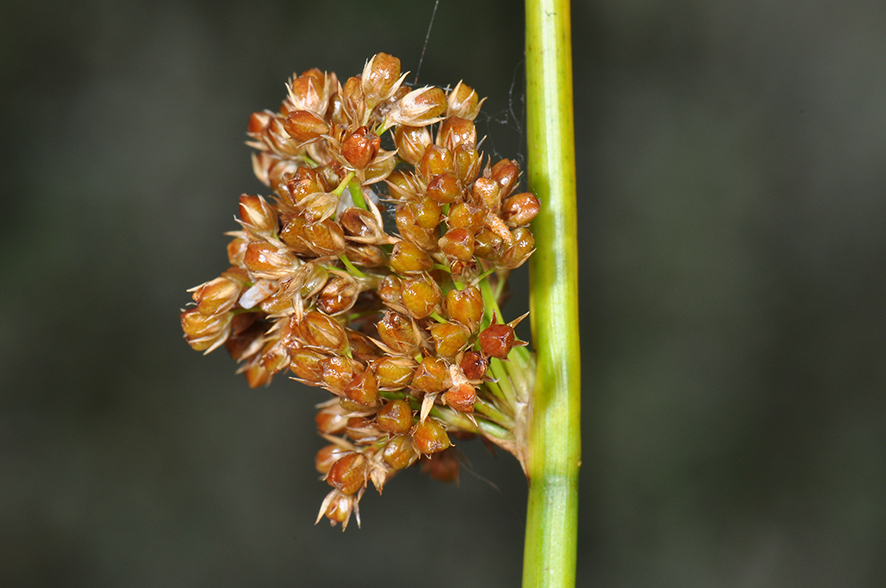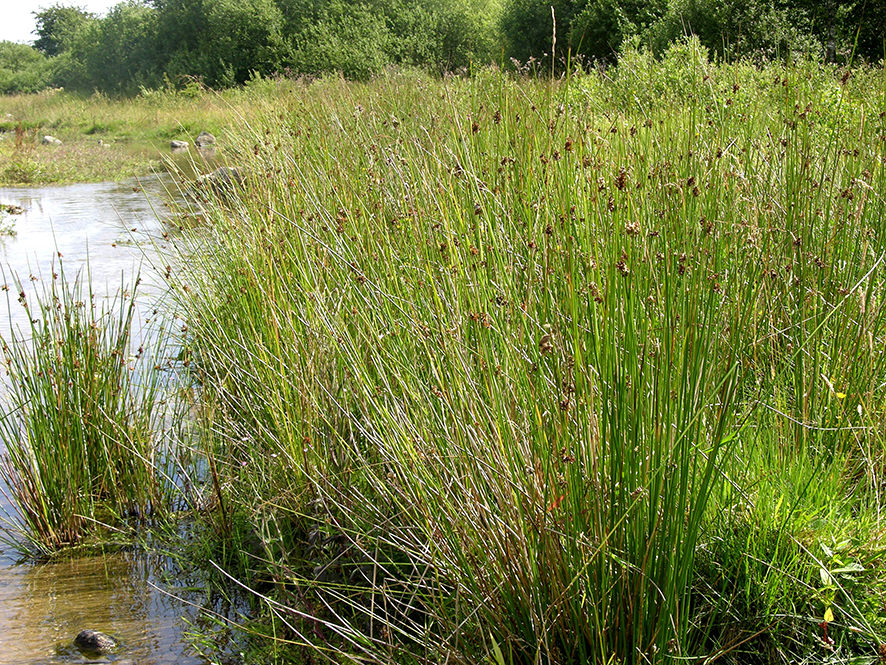Common rush
The common rush grows in dense tussocks in moist meadows and bogs. In meadows that are not being grazed, the rushes can spread and completely dominate the meadow. Common rushes can best be kept down by close mowing followed by grazing, as cattle prefer to eat the young shoots of common rushes.
Common rushes and compact rushes - feel your way.
Common rushes have a cousin called the compact rush. It generally grows on slightly more nutrient deficient soils and the flower forms a slightly denser knob on the stem. The easiest way to tell the two species apart, however, is to feel the stem. Common rushes have a shiny smooth stem and compact rushes have striate-grooved stems that feel rough to the touch

Rushes as a lamp wick.
Inside the green stem is a white foam-like marrow, which with luck can be scraped out to form a long white ”spaghetti string”. In the old days, they used the marrow for lamp wicks, as the marrow can suck the lamp’s fat up to the flame.
Facts: Height. 30-100 cm. Thick mound-shaped growth with upright grass green shoots. Blooms with a brown open tassel, which is positioned on the side of the stem. However, the ”stem” over the flower tassel is a stem-like support leaf.


